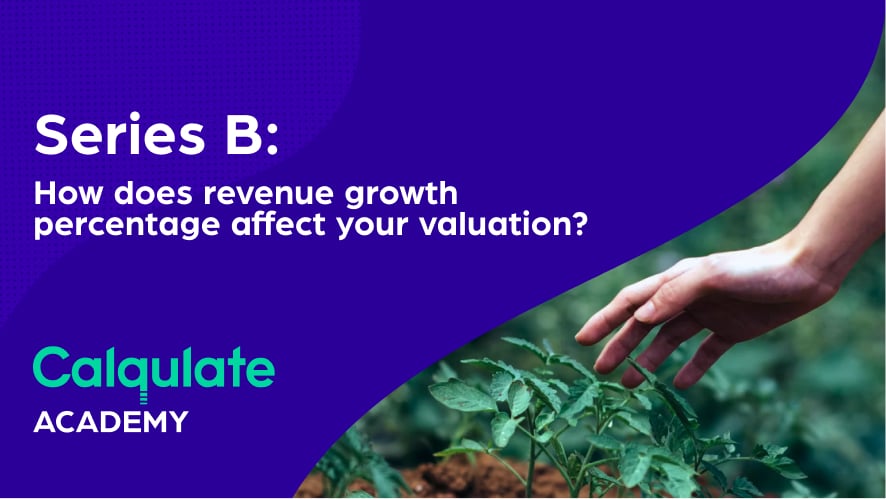The goal of Series B funding is not only to break even but to also generate a net profit. According to Tomasz Tunguz, a venture capitalist at Redpoint, this funding round is the most challenging one for a startup company.
In Series A, the capital raised is used to get the team and product developed. Your key metrics for valuation are:
- Annual recurring revenue (ARR)
- Growth rate
- Net Revenue Retention (NRR)
- Customer Acquisition Cost (CAC)
- Customer Lifetime Value (LTV)
Your CAC and LTV matter but don’t play a role in the investors’ decision-making process yet in Series A.
In Series B, however, it’s all about taking the business to the next level and past the development stage. Your company is well established by now and your valuation will reflect that. You would be making an approximate monthly recurring revenue (MRR) of at least $600,000. And...you’re ready to fuel your company’s growth and start obtaining larger market shares.
Unlike the previous two rounds, seed and Series A, the profitability of your company matters. A lot. Your CAC and LTV will come into play. Your investors’ decision-making is highly metrics-driven. You will also require a more complicated formula to calculate your valuation. In your Series B funding round, the key metrics for valuations are:
- Annual recurring revenue (ARR)
- Growth rate
- Net Revenue Retention (NRR)
- Customer acquisition cost (CAC)
- Customer Lifetime Value (LTV)
- Gross margin
- CAC payback period
- Market sentiment
Before we go into the valuation formula for funding Series B, let’s take a look at the last metric on the list – market sentiment. You may be wondering: What is market sentiment, and how do I gauge that?
Market sentiment
Market sentiment is the overall attitude of investors toward a particular market.
Yes, this is a fuzzy metric to measure. But an important one too. Here’s why:
While Series B funding round has lower investment risks, the capital raised is also larger than Series A. You have a product that is already in the market at this stage. And you’re looking for more investment to scale in order to gain more market shares and net profit. If you were an investor, would you rather invest in a company in a market that is cold, hot, or white hot?
The answer is pretty straightforward – the hotter the market, the better.
In order to assess market sentiment and quantify this metric, you can determine the revenue multiple for comparable SaaS companies through the public markets in two steps:
-
-
-
-
-
- Look at public SaaS companies on the BVP Nasdaq Emerging Cloud Index
- Divide the enterprise value by the revenue
-
-
-
-
Enterprise value / Revenue = Revenue multiple
The BVP Nasdaq Emerging Cloud Index is designed to track the performance of emerging public companies that are primarily involved in providing cloud software as a service to their customers.
An enterprise value (EV) is the measure of a company’s total value or selling price. The above formula in Step 2 is also known as the Enterprise Value-to-Revenue ratio (EV/R). This ratio is often used to determine a company’s valuation in the case of a potential acquisition. It can be used to measure the value of a company’s stock even for companies that don’t generate income or profits.
For example, the selling price of a comparable startup SaaS company (Company A) is $100,000,000. Their annual revenue is $5,000,000. Using the above formula, their revenue multiple is 20. Another comparable company (Company B) has a selling price of $150,000,000 with an ARR of $6,000,000, their revenue multiple is 25. The average revenue multiple for these two companies is 22.5.
To obtain a more accurate average revenue multiple, we’ll need to perform the same calculations for at least five more companies of the same industry. That said...According to BVP Nasdaq Emerging Cloud Index, the average revenue multiple for the SaaS market is 21.1* as of today. It means the market is white hot!
* This value is subject to change on a daily basis.
So...How do we calculate the valuation for funding Series B?
The formula for calculating your Series B valuation for an immediate directional view of your company is:
Multiplier x ARR x Annual growth rate x NRR x Gross margin = Valuation
For example, if your key metrics are as follows:
ARR = $7,500,000
Annual growth rate = 200%
Net revenue retention = 150%
Gross margin = 85%
Using a market sentiment multiplier of 10, as we’ve done in the previous valuation articles, your calculation will look like this:
10 x 7,500,000 x 2 x 1.5 x 0.85 = $191,250,000
Your company is now worth $191,250,000 with these metrics.
Out of curiosity...what would it look like if we calculated your company’s valuation based on today’s market sentiment? Let’s take a look. We know that the revenue multiplier for SaaS market is 21.1 as of today, and we’ll keep the rest of the variables as they are. Here’s how your calculation will look like instead:
21.1 x 7,500,000 x 2 x 1.5 x 0.85 = $403,537,500
According to market sentiment, your company is worth $403,537,500. Based on the metrics above, we know that your product is selling itself, the demand for it is high, and you have a healthy gross margin. All of that spells profitability – exactly what your investors are looking for in this round of funding.
One thing to bear in mind...
The list of metrics that matter will continue to grow as we advance through the different rounds of funding. But there is one metric that will ALWAYS matter from the get go – your growth rate.
Let’s make three sets of calculations with different growth rates and ARR for comparison. The formula and variables are as such:
Multiplier x ARR x Annual growth rate x NRR x Gross margin = Valuation
Set 1 Set 2 Set 3
ARR = $7,500,000 ARR = $7,500,000 ARR = $15,000,000
Annual growth rate = 200% Annual growth rate = 80% Annual growth rate = 80%
NRR = 150% NRR = 150% NRR = 150%
Gross margin = 85% Gross margin = 85% Gross margin = 85%
| Growth rate | ARR | Multiplier: 10x | Valuation estimate | Multiplier: 21.2x | Valuation estimate |
| 200% | $7,500,000 | 10 x 7,500,000 x 2 x 1.5 x 0.85 | $191,250,000 | 21.1 x 7,500,000 x 2 x 1.5 x 0.85 | $403,537,500 |
| 80% | $7,500,000 | 10 x 7,500,000 x 0.8 x 1.5 x 0.85 | $76,500,000 | 21.1 x 7,500,000 x 0.8 x1.5 x 0.85 | $162,180,000 |
| 80% | $15,000,000 | 10 x 15,000,000 x 0.8 x 1.5 x 0.85 | $153,000,000 | 21.1 x 15,000,000 x 0.8 x 1.5 x 0.85 | $322,830,000 |
The table above shows how your growth rate affects your valuation. Even if you double your ARR to $15,000,000, but with a growth rate of 80%, your valuation is still lower than when you have an ARR of $7,500,000 but with a growth rate of 200%.
Your numbers don’t lie...
We’ve mentioned at the beginning of this article that this funding round is the most challenging one for a startup company. The decision to invest is all about the numbers. Valuation of your company at this stage is highly metrics-driven and done based on the performance in comparison to the industry, revenue forecasts, assets and liabilities.
While a proper Series B valuation needs to take into account many other factors, the above formula provides an immediate idea of your company’s worth and areas of improvement when you are preparing for your funding round.
Key takeaway: As in all other funding rounds your growth rate is the metric that matters the most. Apart from a healthy growth rate in Series B, your NRR rate matters a lot too. You should also have a minimum CAC/LTV ratio of 3 and preferably a CAC payback time of less than 12 months.

